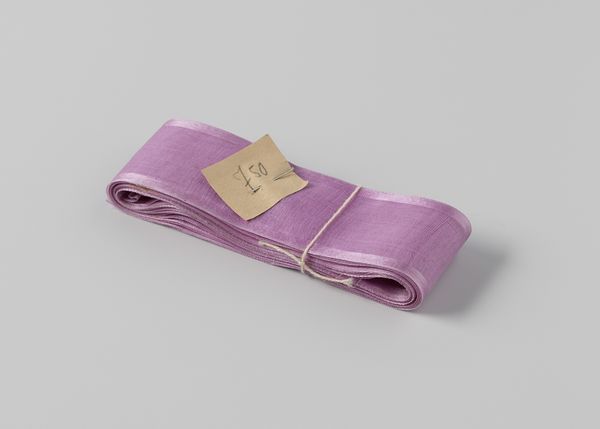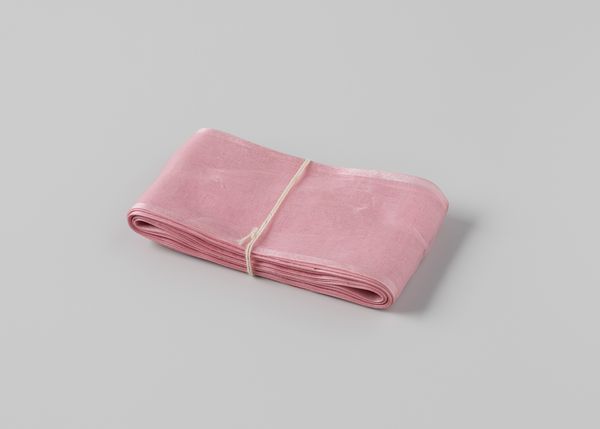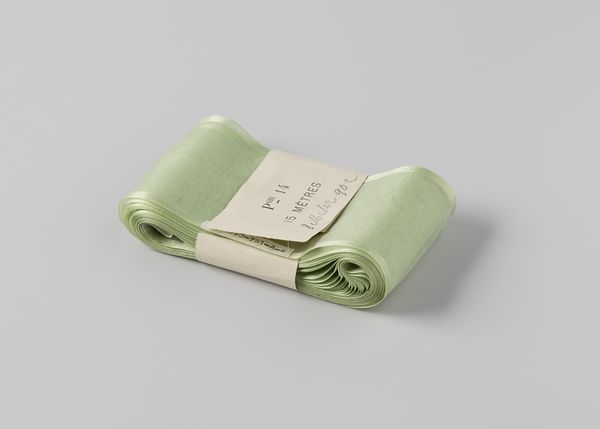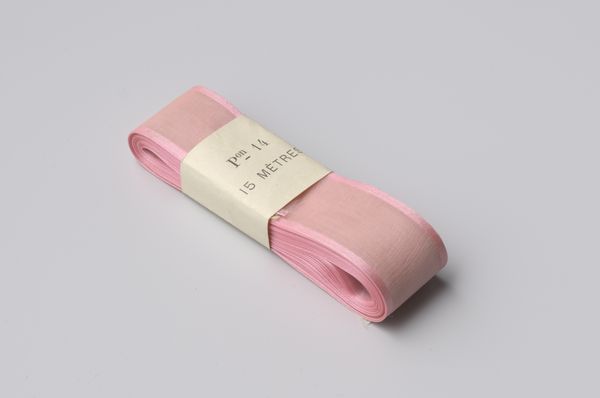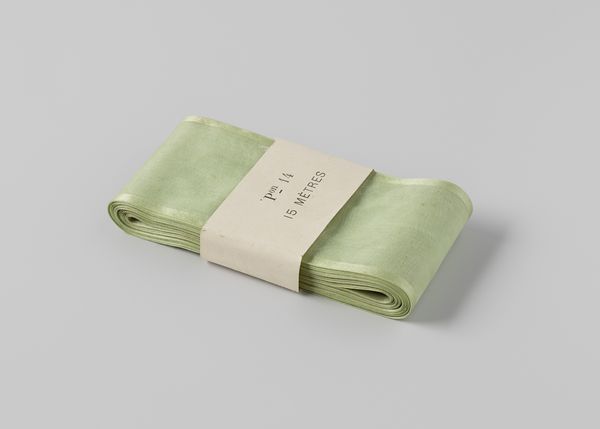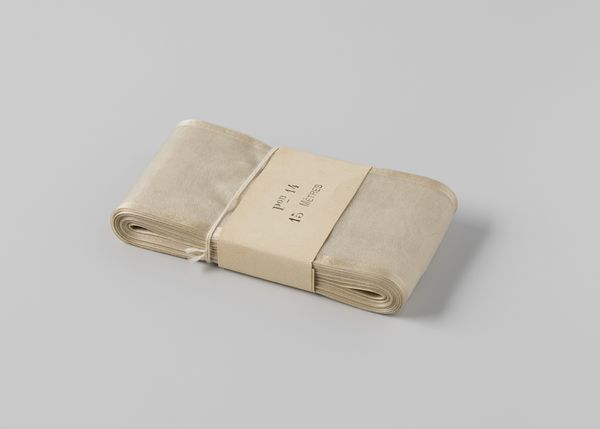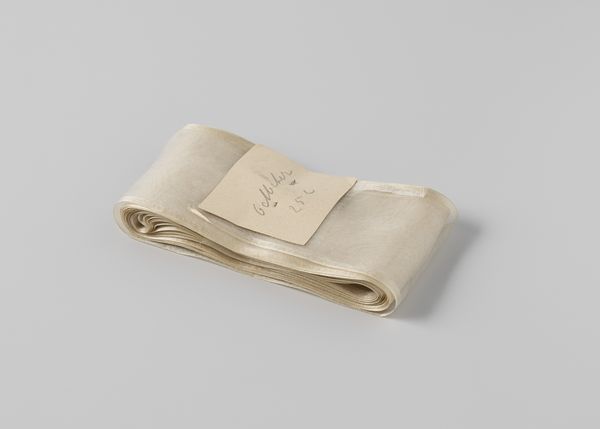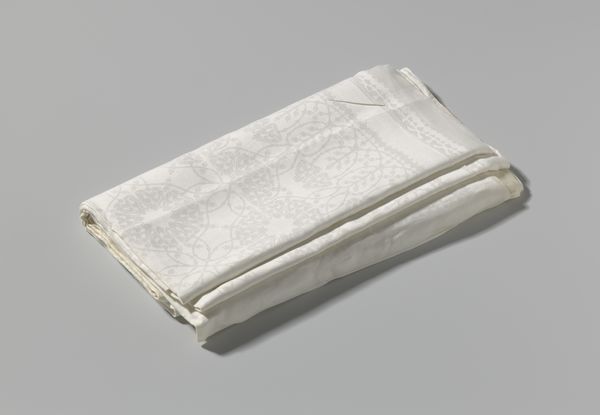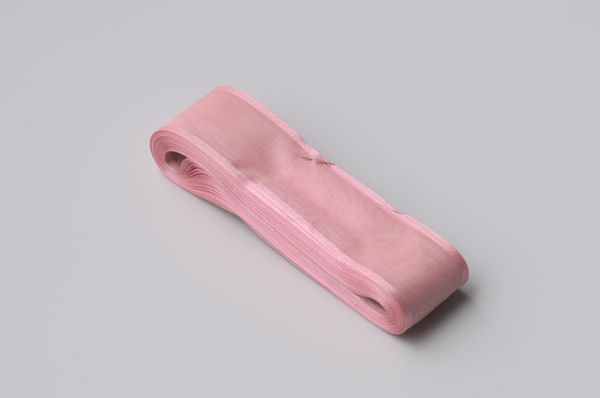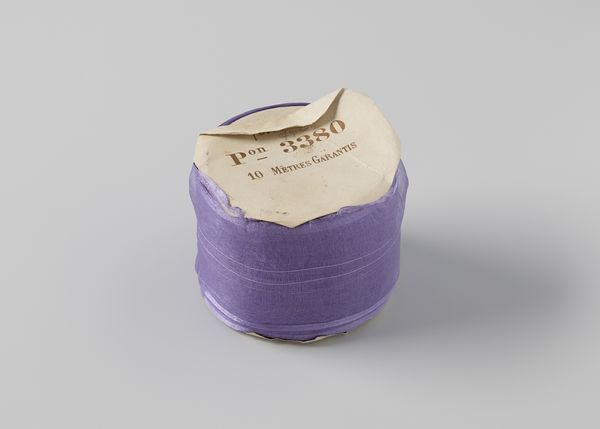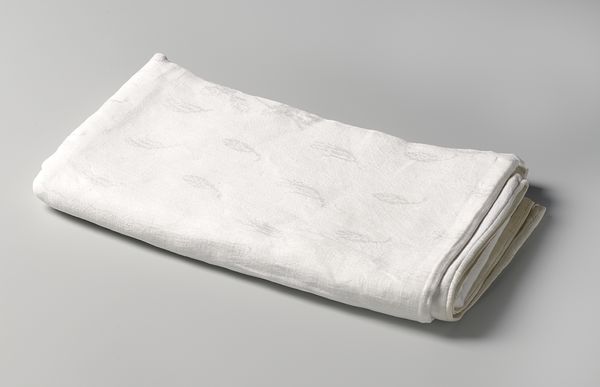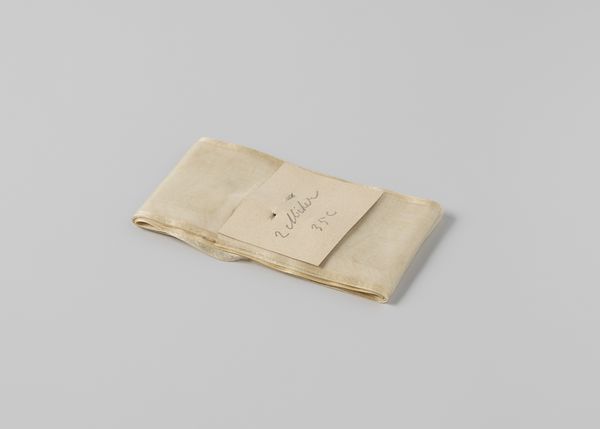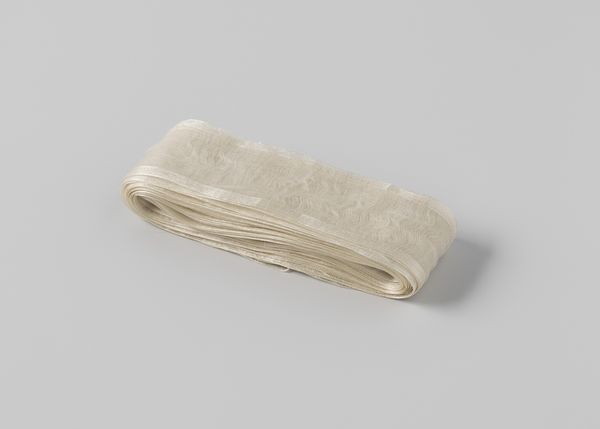
fibre-art, textile, photography
#
fibre-art
#
textile
#
photography
#
orientalism
Dimensions: length 1500 cm, width 6 cm, height 2 cm, width 6 cm, length 13.3 cm
Copyright: Rijks Museum: Open Domain
Art Historian: Editor: Hello! Here we have "Lint van lila gaas," or "Ribbon of lilac gauze," made sometime between 1900 and 1915. I see it’s labelled as fibre art, textile, and also photography in terms of medium. It’s… well, it’s a photograph of a roll of lilac ribbon. It seems simple enough, almost mundane. I mean, it's a photograph, but I wonder, why is it in an art museum? What am I missing? Art Historian: Good question. Consider the materials: gauze and paper. The gauze itself suggests delicate craftsmanship and potentially elaborate garment production or adornment. What does the photographic documentation, which we might normally overlook, do to its status? Editor: That's a fascinating point! I never really considered how the photograph elevates the ribbon. Is it suggesting the means of making the photograph somehow transforms simple commercial material to fine art by displaying and immortalizing an everyday item? Art Historian: Precisely. Now think about its context. Late 19th and early 20th centuries were periods of industrial advancement and rising consumer culture, so does it matter that ‘orientalism’ is one of its styles listed? How could the industrial process to create the ribbon relate to how the ‘Orient’ was consumed at the time? Editor: Well, 'orientalism' to me implies that items and ideas from the "East" were being re-packaged and marketed towards Western audiences at the time. So the materials in turn speak of industrial reproduction meeting exotic inspirations. This ribbon, photographed for display, kind of highlights consumerism using these appropriated styles! Art Historian: Yes! Consider the labour involved, both in producing the ribbon and creating the photograph. Were both meant to showcase availability to markets, and who had access to it? It all intertwines into an insight on consumerism. Editor: I see that it encourages thinking about both historical consumer markets through labour, style and commodity! Art Historian: Indeed! The seemingly simple object, through its material construction and presentation, invites scrutiny of the complex social and economic forces at play in its creation and consumption.
Comments
No comments
Be the first to comment and join the conversation on the ultimate creative platform.
